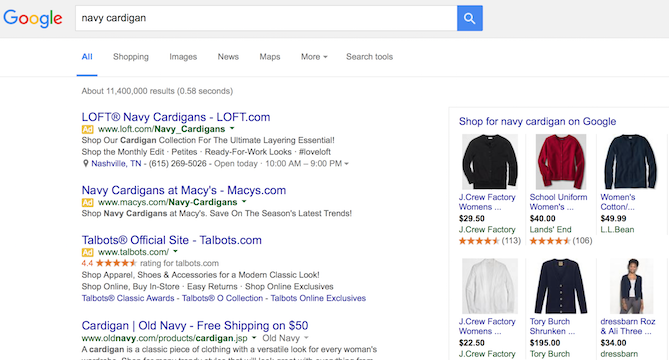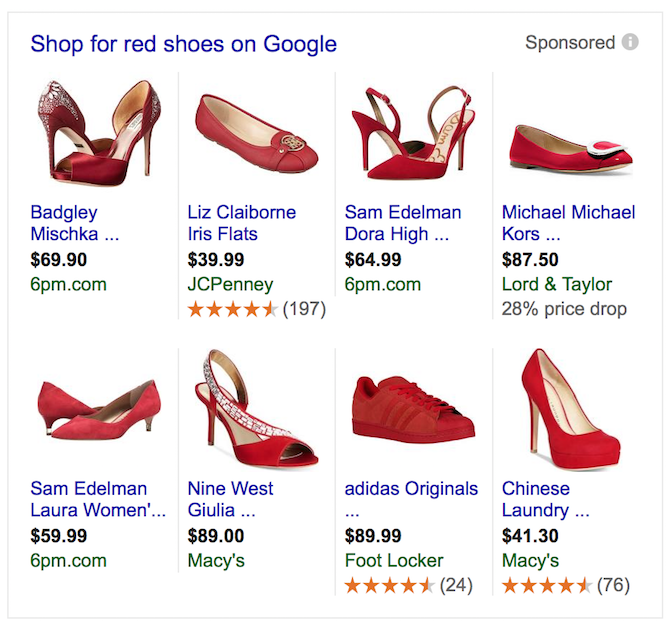
If you’ve searched Google recently, then you may have notice something different. In the past, searches for products pulled up two or three paid ads in the search results, and then along the right side of the screen, more paid ads were displayed. Those right-side ads? They’re gone now. In their place is an opportunity for ecommerce companies.
Hello Product Placement
The words “product placement” bring to mind characters drinking from a can of Coca-Cola during the most exciting scene in the movie. Well, okay, we can run with that. Only, instead of characters, it’s Google search results. And instead of Coca-Cola, it could be your product.
The paid ads in the results list haven’t changed, but there on the right side, we now see a grid with products that are relevant to the search. Anyone planning to do a bit of shopping just passed a window with everything they ever wanted on display, right?

Proper Placement Protocol
If you look closely at the screenshot above, you’ll see that one of these things is not like the others. This is an issue that ecommerce companies will have to address if they hope to make the most of this new product placement. To understand what went wrong, you have to understand how these products appear in the first place.
We’ve covered the best practices for product ads before, but some things bear repeating. The keywords you bid on for your paid product ads are important. They tell Google what you’re actually selling. If you use the keyword “navy cardigan” when, in fact, you are selling a red one, then you’ll waste money on every click you receive. How many people will buy a red one when navy is what they’re searching for?
How You Can Benefit
You can take advantage of this change by double checking your current ad practices. Strategy for these ads is imperative if you want your products to appear during searches. The example above is just one way you could fail at promoting your products. Consider the many ways your users might search for the items you’re selling. What words might they use to find those products?
Let’s say you have a pair of shoes you want to sell. What color are they? If they’re red, make sure that’s one of the search terms you use. A quick search of red shoes provides the following:

This is a good start, right? But if you’re actually selling a pair of red heels, there’s a good chance your product ad won’t appear. There are too many other types of red shoes competing for space. So, we need to specify red heels, right?

This is a little closer. At least images of red high heels are showing up in this search. The styles are still vastly different, so unless you’ve bid quite a bit on your keywords, you might still be fighting for some real estate in the product ad grid. You could make things easier on yourself by adding more keywords to further narrow the search.

This final search for red patent heels drills right down to the very type of shoe a buyer may be seeking. Sure, if they just need red heels, they won’t bother adding the material. Those who do want a particular shoe, however, are much more likely to find yours.
The ad space is growing ever smaller, which means companies need to pay more to secure their spot. Whether you’re trying to find space in the new product display grid or with text ads in search results, don’t be surprised if ad prices blow sky high. For paid ads, your only defense (outside of reaching deep into your pockets) is a strong strategy that weeds out the competition. You need to be thinking smarter about PPC and more about diversifying your acquisition strategy.
![]()








